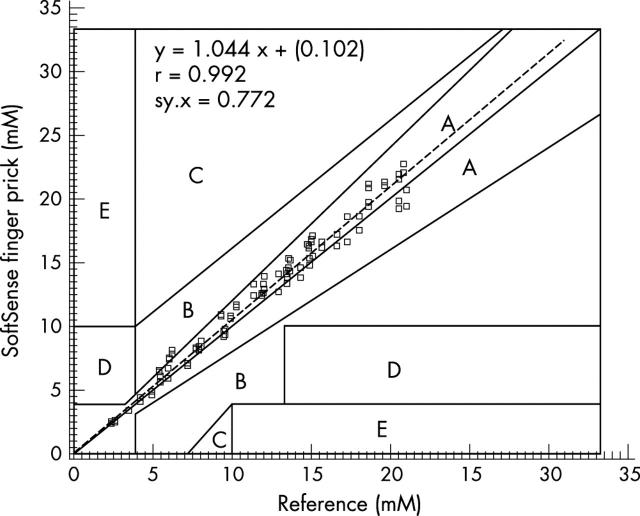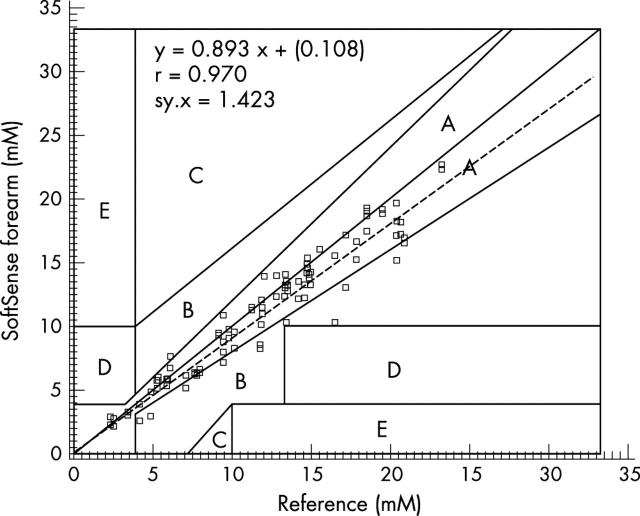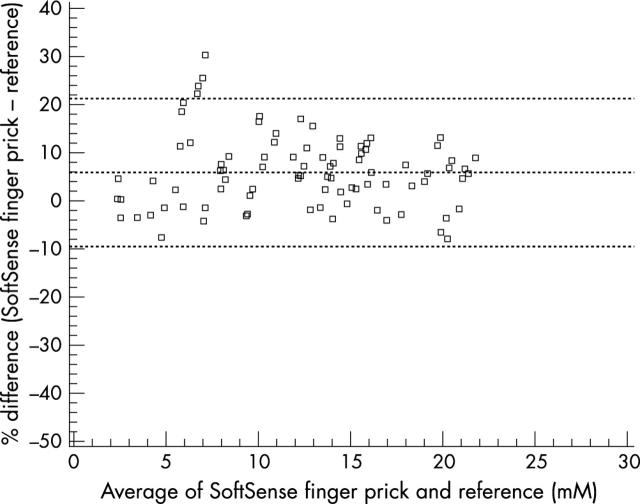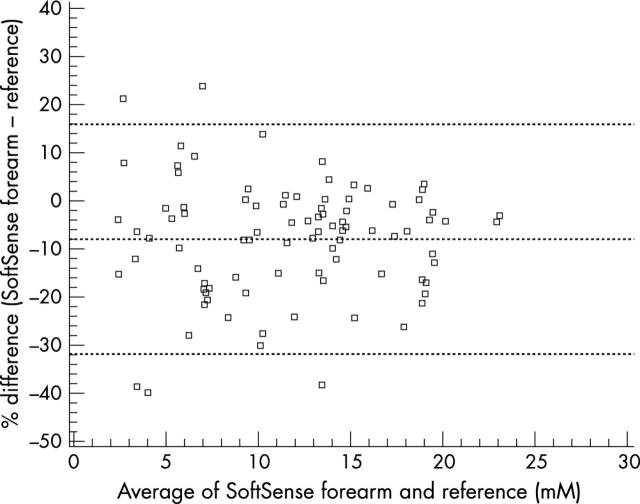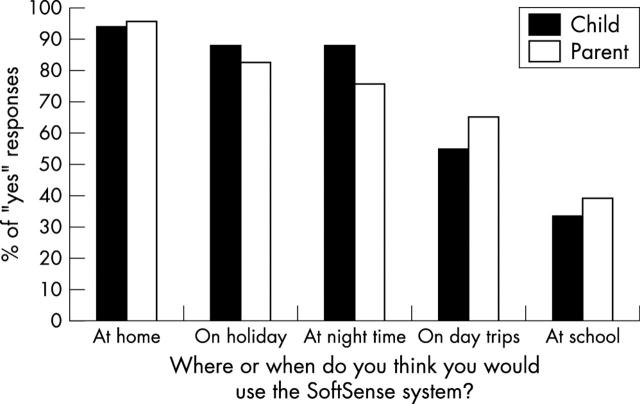Abstract
Aims: To compare the accuracy and acceptability of capillary blood glucose testing from the forearm with finger prick testing in diabetic children.
Methods: Blood glucose measurements from samples taken from the forearm and the finger were compared in an outpatient setting from 52 children and adolescents with diabetes mellitus aged 6–17 years. Opinions on forearm sampling were collected by questionnaire.
Results: Blood glucose results obtained from forearm sampling correlated well with results from the finger measured by the Yellow Springs Instrument analyser. Error grid analysis showed that 100% of measurements were clinically acceptable; 61% of children reported that forearm testing was painless and 19% that it was less painful than finger prick testing.
Conclusion: Forearm testing is an acceptable alternative to finger prick testing for blood glucose measurement in children and adolescents.
Full Text
The Full Text of this article is available as a PDF (126.3 KB).
Figure 1 .
Comparison of SoftSense finger prick blood glucose measurements with the reference method (finger prick sampling) (n = 90) using the Clarke error grid.3
Figure 3 .
Comparison of forearm blood glucose measurements with the reference method (finger prick sampling) (n = 92) using the Clarke error grid.3
Figure 2 .
Bland-Altman analysis of SoftSense finger prick blood glucose measurements with reference method (n = 90) with lines representing the mean difference and ±2 SDs.
Figure 4 .
Bland-Altman analysis of SoftSense forearm blood glucose measurements with reference method (n = 92) with lines representing the mean difference and ±2 SDs.
Figure 5 .
The answers given by children and adolescents or their parents when asked "where or when do you think you would use the SoftSense system?".
Selected References
These references are in PubMed. This may not be the complete list of references from this article.
- Bennion Nancy, Christensen Nedra K., McGarraugh Geoff. Alternate site glucose testing: a crossover design. Diabetes Technol Ther. 2002;4(1):25–47. doi: 10.1089/15209150252924058. [DOI] [PubMed] [Google Scholar]
- Clarke W. L., Cox D., Gonder-Frederick L. A., Carter W., Pohl S. L. Evaluating clinical accuracy of systems for self-monitoring of blood glucose. Diabetes Care. 1987 Sep-Oct;10(5):622–628. doi: 10.2337/diacare.10.5.622. [DOI] [PubMed] [Google Scholar]
- Ellison John M., Stegmann Janet M., Colner Sandra L., Michael Ragui H., Sharma Manoj K., Ervin Kenneth R., Horwitz David L. Rapid changes in postprandial blood glucose produce concentration differences at finger, forearm, and thigh sampling sites. Diabetes Care. 2002 Jun;25(6):961–964. doi: 10.2337/diacare.25.6.961. [DOI] [PubMed] [Google Scholar]
- Fineberg S. E., Bergenstal R. M., Bernstein R. M., Laffel L. M., Schwartz S. L. Use of an automated device for alternative site blood glucose monitoring. Diabetes Care. 2001 Jul;24(7):1217–1220. doi: 10.2337/diacare.24.7.1217. [DOI] [PubMed] [Google Scholar]
- Schiffrin A. Psychosocial issues in pediatric diabetes. Curr Diab Rep. 2001 Aug;1(1):33–40. doi: 10.1007/s11892-001-0008-8. [DOI] [PubMed] [Google Scholar]



